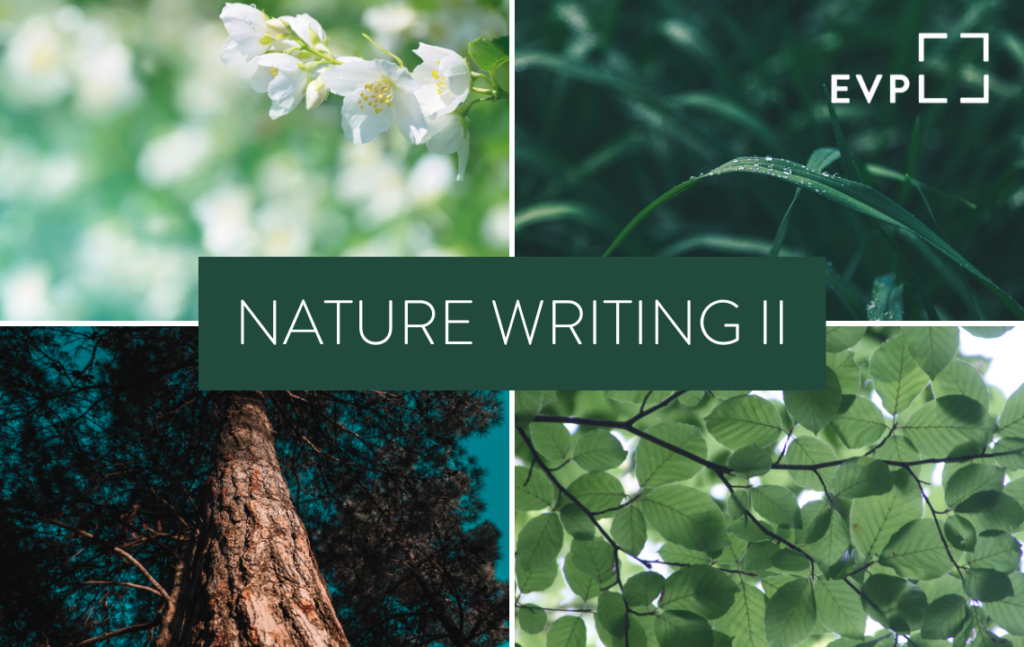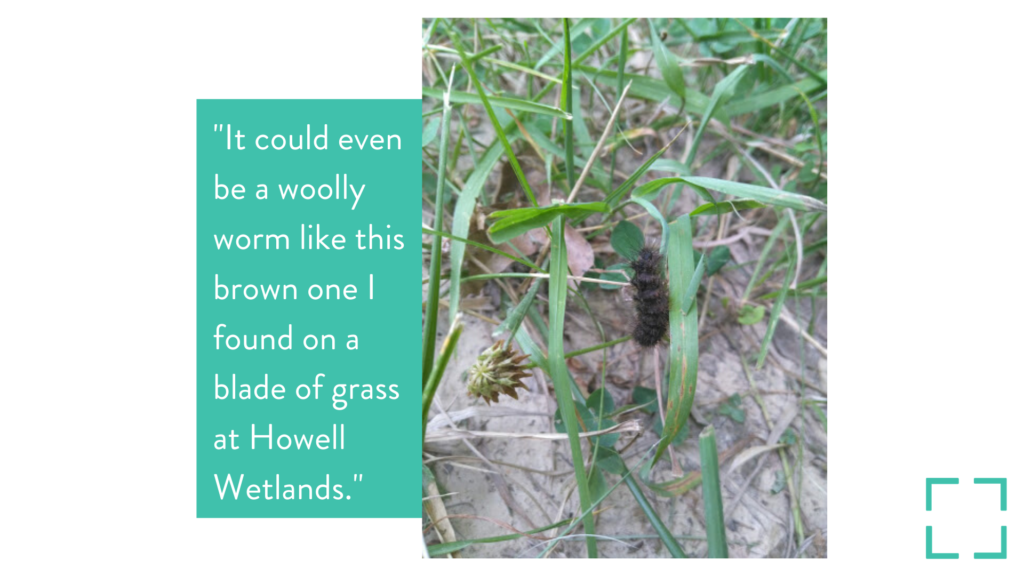Let nature be your creative guide
In our first post about nature writing, we talked about noticing the natural world right in your backyard. Today, we’re going to use those skills to create nature journal entries.

One of my biggest influences as a nature journaler is John Muir Laws. He’s an author and naturalist who explains nature journaling in easy-to-understand ways in The Laws Guide to Nature Drawing and Journaling. While Laws publishes his journals, nature journaling can be completely private. I find that it’s a way for me to connect meaningfully with nature.
To create a nature journal, you will need a notebook, a pencil, and any other art supplies you would like to use. Many nature journalers use watercolors or colored pencils, but crayons and markers can also be useful.
Go out into your own nature area. This can be your yard, a neighborhood park, or even a patch of grass near your home. Find one object in that area to sketch. The object might be a flower, a feather, a rock, or any other small item.

The first step to nature journaling is quiet observation. Set down your journal and supplies and simply observe your object. Try not to immediately name it, even if you know what it is. Instead, take some time to really notice the details. What color is it – is it the same color all around, or does it have blotches of lighter color? Is it heavy, and if so, how heavy – what can you compare it to? What shape is it – do you think it’s retained its original shape, or has something eaten part of it? What does it smell like? Spend several minutes with the object.
Next, pick up your pencil and start sketching. Sketches do not have to be perfect or super-artistic. You don’t have to be Bob Ross. Anything you don’t convey through your sketch can be explained in writing. You just have to record what you observe in a way that feels accurate to you.
If you don’t feel comfortable with traditional sketching, you can journal in other multimedia ways. This is one situation in which tracing is encouraged! Crayon rubbings are also an easy way to represent an object such as a leaf in your journal. If you’re exploring your own nature space and not a nature preserve, you can paste leaves and rocks into your journal.
If you’re not sure what to say about your object, consider asking questions about it. These don’t have to be scientific questions, although they can be (what’s the scientific name for this? What is this related to?). You can wonder “Does this creature have a family? Do mice use this tree bark as a house? What would my life be like if I were small enough to fit inside this hollow log?” Let your imagination run. Sometimes these more experimental questions can lead to you writing poetry or fiction.
When you’re finished writing, drawing, and creating multimedia entries, take a moment to sit quietly in your nature area. Set your journal and art supplies to the side. Listen to the wind and the birds. Feel the grass and dirt under your hands. Explore the world around you – after all, that’s the real point of nature journaling.
Next time, we’ll turn our nature journal entries into poetry.

Kirt E.
Kirt Ethridge is a lifelong Evansville resident who loves superhero comics and is devoted to equity in libraries.
200 SE Martin Luther King Jr. Blvd
Evansville, Indiana 47713
Administration: ceo@evpl.org
Card & Account: circulation@evpl.org
Feedback & Ideas: marketing@evpl.org



